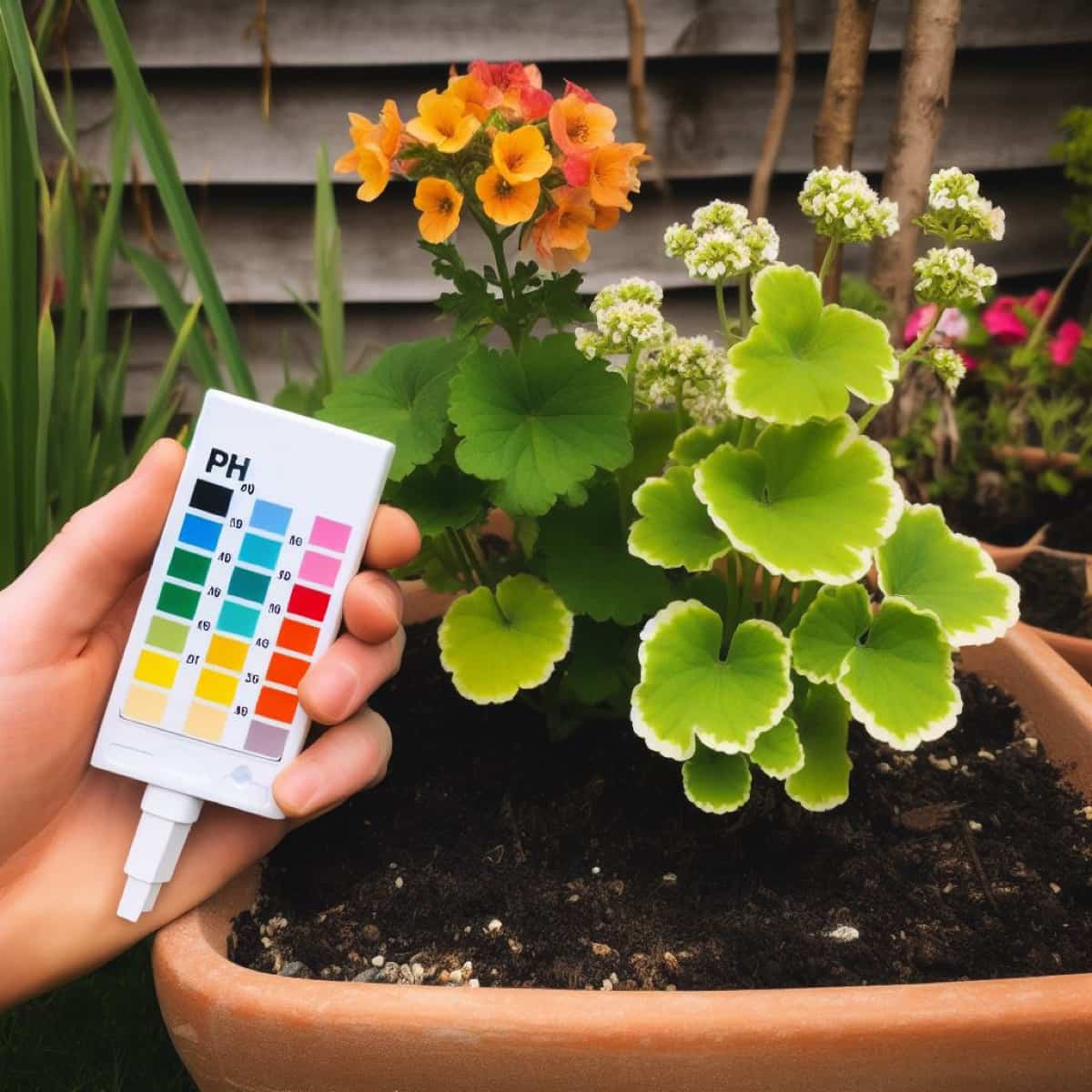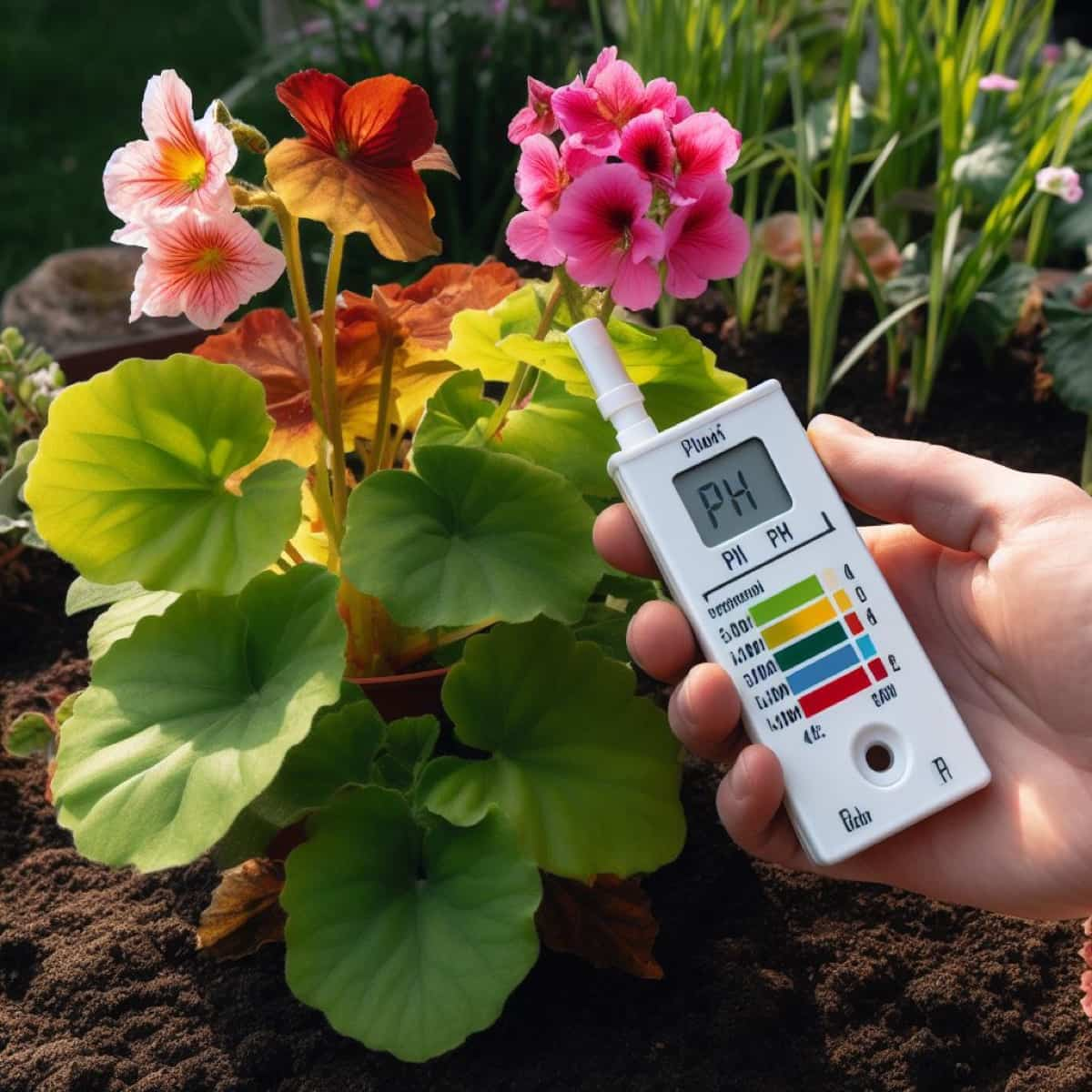Gardening enthusiasts understand the pivotal role of soil pH in nurturing a thriving flower garden. This Flower Garden Soil pH Chart is crucial to achieving floral excellence. It delineates optimal pH values for various flowers, unlocking the secrets to vibrant blooms. Whether tending to delicate roses or hardy sunflowers, this chart offers a comprehensive guide to ensuring your garden flourishes. Explore this indispensable resource to strike the perfect pH balance for your specific blooms, fostering a tapestry of colors and scents that will delight any gardener’s heart.

Importance of Soil pH for Flower Growth
Flower garden soil pH is paramount for flower growth, as it profoundly influences nutrient availability and absorption. Most flowers thrive within specific pH ranges, and deviations can hinder their development. Acidic soils with low pH can impede nutrient uptake, causing deficiencies, while alkaline soils may lead to toxicity.
Maintaining the right flower garden soil pH ensures optimal nutrient utilization, root health, and microbial activity, fostering robust, colorful blooms. Furthermore, pH affects the solubility of minerals and organic matter decomposition, impacting overall soil fertility. Understanding and regulating soil pH is fundamental to successful flower gardening and is essential for vibrant, flourishing plants.
Optimal Soil pH Levels for Different Flower Crops with Chart: Soil pH For Flowers Chart
| Flower Type | Optimal Soil pH Range |
| Roses | 6.0 – 6.5 |
| Tulips | 6.0 – 7.0 |
| Hydrangeas | 5.5 – 6.5 |
| Sunflowers | 6.0 – 7.5 |
| Azaleas | 4.5 – 6.0 |
| Lavender | 6.0 – 8.0 |
| Geraniums | 6.0 – 7.0 |
| Marigolds | 6.0 – 7.0 |
| Irises | 6.0 – 7.5 |
| Petunias | 5.5 – 6.2 |
| Daffodils | 6.0 – 7.0 |
| Pansies | 5.4 – 6.2 |
| Zinnias | 5.5 – 7.5 |
| Lilies | 6.0 – 6.5 |
| Orchids | 5.5 – 6.5 |
Maintaining these optimal Flower garden soil pH levels for specific flowers ensures they receive the necessary nutrients, as different pH values can affect nutrient solubility. For example, acid-loving plants like Azaleas thrive in slightly acidic soils, while alkaline-loving flowers like Iris prefer more alkaline conditions. Regular soil testing and appropriate pH adjustment, either through soil amendments or choosing suitable locations for planting, are key practices to guarantee healthy and vibrant flower growth. Understanding the soil pH preferences of your chosen flower crops is a vital step toward a successful and colorful garden.
Acidic Soil vs. Alkaline Soil: Implications for Flower Cultivation
Acidic Soil (pH < 7.0)
- Suitable Flowers: Acid-loving plants like Azaleas, Rhododendrons, Camellias, Hydrangeas, Blueberries, Gardenias, Heather, Daffodils, Ferns, and Bleeding Hearts thrive in acidic soil conditions.
- Nutrient Availability: In acidic soil, certain nutrients like iron, manganese, and aluminum become more available to plants.
- Challenges: Excessive acidity can lead to nutrient imbalances, resulting in stunted growth and yellowing leaves. It may require lime or other amendments to raise your Flower garden soil pH.
In case you missed it: How to Control Bugs in Garden Soil Naturally: Non-toxic and Eco-friendly Solutions

Alkaline Soil (pH > 7.0)
- Suitable Flowers: Flowers like Lilacs, Yarrow, Iris, lavender, lilac, delphinium, salvia, and dianthus prefer alkaline soils.
- Nutrient Availability: Alkaline conditions can limit the availability of essential nutrients like iron, potentially causing deficiencies.
- Challenges: Alkaline soil can lead to poor nutrient uptake, affecting plant health. Sulfur or organic matter can be added to lower your Flower garden soil pH.
Balancing soil pH is essential for flower cultivation to ensure plants receive the right nutrients for healthy growth. Regular soil testing and appropriate amendments help create the optimal pH conditions for a thriving flower garden.
Adjusting Soil pH for Successful Flower Gardening
- Test Soil pH Level Of Flower Garden: Begin by testing your soil to determine its current pH. Home test kits or professional services can provide accurate readings.
- Choosing the Right Flowers: Select flower varieties that match your soil’s natural pH. This reduces the need for extensive pH adjustment.
- Amendments: Add materials like lime or wood ash to raise soil pH (for more alkaline conditions). To lower pH (for more acidic conditions), use sulfur, pine needles, or organic matter.
- Incorporate Amendments: Thoroughly mix the chosen amendments into the soil, ensuring even distribution.
- Monitor pH: Regularly test and monitor pH levels to maintain the desired range.
- Mulching: Applying organic mulch can help regulate soil pH by providing a buffer against extreme fluctuations.
- Water Management: Proper watering practices can also influence pH. Avoid overwatering, as excessive moisture can leach nutrients and affect pH.
Monitoring and Testing Your Flower Garden Soil pH
- Soil Testing: Begin with a comprehensive soil test using a home test kit available in the local garden center or sending samples to a local cooperative extension or professional lab. This test provides an accurate baseline pH reading.
- Seasonal Testing: Conduct soil tests at least once a year, typically in the spring or fall. This will help you track any pH fluctuations.
- Spot Checks: For specific plants, especially if you notice growth issues, perform spot checks with pH meters or test strips to assess localized conditions.
- Sampling Depth: Collect soil samples from various depths (surface, root zone, and subsoil) to identify potential variations in your Flower garden soil pH.
- Record Keeping: Maintain a record of your pH measurements over time, enabling you to make informed decisions about necessary amendments or adjustments.
In case you missed it: DIY Methods to Improve Soil Quality in Your Garden: Treatment and Solutions

Effects of Imbalanced Soil pH on Flower Plant Health and Productivity
Imbalanced soil pH can have detrimental effects on flower plant health and productivity. Nutrient uptake is hindered when pH deviates from a flower’s preferred range. In overly acidic soils, essential minerals like calcium and magnesium become less available, leading to nutrient deficiencies and stunted growth.
Conversely, overly alkaline soils can result in poor iron and manganese absorption, causing similar growth problems. Imbalanced pH also impacts beneficial soil microorganisms, affecting nutrient cycling and root health. Weakened plants are more susceptible to pests and diseases, compromising flower productivity. Achieving the right soil pH is paramount to ensure robust, vibrant flowers with higher resistance to stressors and superior bloom quality.
Remedies for Correcting High or Low Soil pH in Flower Beds
Correcting high or low soil pH in flower beds is essential for healthy growth. How to lower pH in soil? To remedy high pH (alkaline soil), add elemental sulfur, pine needles, or organic matter like peat moss. For low pH (acidic soil), incorporate lime or wood ash. Work amendments thoroughly into the soil, following package instructions for application rates.
Regular soil testing helps monitor pH levels and soil pH adjustment as needed. Additionally, selecting plants adapted to your soil’s pH can reduce the need for extensive adjustments. Always follow recommended safety precautions when handling pH-adjusting materials, and retest periodically to maintain the desired pH range for your flower bed.
Maintaining Optimal Soil pH for Long-Term Flower Crop Success
Sustaining optimal soil pH is key to long-term flower crop success. Start with a soil pH test to identify the current pH. Choose flower varieties that match your soil’s natural pH, reducing the need for constant adjustment. Incorporate organic matter to enhance soil buffering capacity and nutrient retention.
Regularly monitor your Flower garden soil pH levels, adjusting as necessary with lime or sulfur. Mulching and proper watering practices can help stabilize pH. Over time, these practices support healthy plant growth, prevent nutrient imbalances, and foster a vibrant and thriving flower garden for years. Consistent pH management is a cornerstone of sustainable flower cultivation.
In case you missed it: How to Build Vegetable Garden Boxes in 10 Easy DIY Steps

Conclusion
In conclusion, the Flower Garden Soil pH Chart provides an invaluable roadmap for achieving thriving and vibrant flower gardens. Understanding the flower garden soil pH level chart and the specific pH preferences of various flowers is vital for their long-term health and productivity. By tailoring your soil’s pH to match these preferences, you can have the full potential of your garden, fostering a breathtaking display of colors and scents.
- Feed Your Flock for Less: Top 10 Tips to Save on Chicken Feed
- Ultimate Guide to Ossabaw Island Hog: Breeding, Raising, Diet, and Care
- Hatching Answers: The Top 10 Reasons Your Chickens Aren’t Laying Eggs
- Eggs and Economics: Breaking Down the Cost of Raising Backyard Chickens
- Defend Your Greens: Proven Methods to Keep Iguanas Out of Your Garden
- Ultimate Guide to Cinnamon Queen Chicken: A Comprehensive Guide for Beginners
- Ultimate Guide to California Tan Chicken: Breeding, Raising, Diet, Egg-Production and Care
- Ultimate Guide to Marsh Daisy Chicken: Breeding, Raising, Diet, and Care
- 10 Types of Chicken Farming Businesses You Can Start for Profits